|
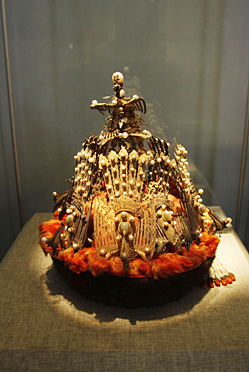 |
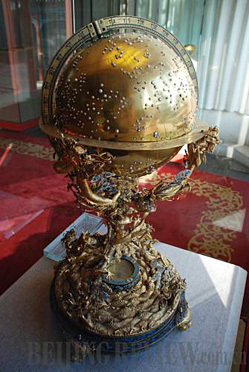 |
|
Marten and pearl crown of a Qing Dynasty empress (CFP) |
Spherical astrolabe decorated with gold and pearl (CFP) |
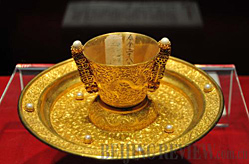 |
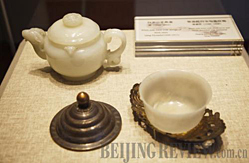 |
|
A golden cup of the royal family (ZHOU HUIMIN) |
A white jade tea set (CFP) |
Nowadays, the museum still collects valuable paintings and calligraphy from the contemporary era. In addition, some recently unearthed cultural relics have also been added to its collection. Thus, the museum's collection continues to increase.
Palace on paper
After the latest survey, the museum has decided to compile a comprehensive catalogue of the collection and a series of books introducing parts of the collection in the Palace Museum, which will have a paper edition and an electronic version respectively. The electronic version will be placed on the museum's official website.
The series will feature 150,000 of the most typical and representative treasures among all the items, which fall into 26 categories, including sculpture, jade, bronze, paintings, furniture, enamel, and is expected to reach 500 volumes. The publishing of the series is such a big project that it is hailed as a "palace on paper." Already, the volumes of sculpture, jade and enamel have been completed. The first six volumes of the painting part have been finished.
The content about sculpture comprises nine volumes in all, recording 2,000 precious sculptures, with great value in terms of archaeological and historical research.
The 10 volumes of the jade part selected more than 3,000 representative jade items from the Stone Age to the Qing Dynasty, including tools, weapons, sacrificial vessels, jade pendants, adornment articles and stationery. The jade pieces are arranged according to period, shape, quality and decorative pattern, in order to show directly the development and variation among jade items from different ages and the characteristics of each different period.
About 7,000 enamel items were selected for the part of enamel, which in all comprises five volumes. Those items are mainly from the period from the Yuan Dynasty (1271-1368) to the modern era.
"For most people, the cultural relics collected in the Palace Museum are very mysterious. The series aims to present those treasures that represent the ancient civilization of China to the whole world. The publication of the data about those treasures will be of great significance for the protection of the Forbidden City and the exploration of its cultural significance, especially as regards historical and archaeological study," said Zheng Xinmiao, Curator of the Palace Museum.
Zheng said the museum is a great treasure house with many precious collections and ancient books as well as historical data. It should not only be well protected but also be utilized well. The museum should be open to everyone, giving full play to its value in academic research, art appreciation and cultural communication. He said he hopes that the book series on the museum's collection will transform those treasures from merely artifacts belonging to the royal family into real wealth for the entire society.
The Palace Museum
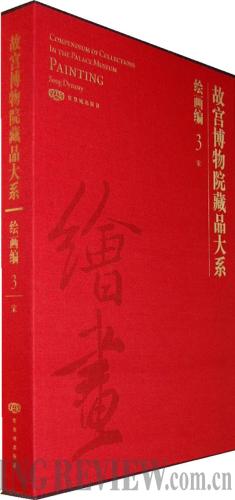 |
|
A volume from the series on collection of the Palace Museum (FILE) |
Located in the center of Beijing, the Palace Museum was established in the Forbidden City, a royal palace of the Ming and Qing dynasties (1368-1911), to preserve and display its treasures. Founded in 1925, the museum is the largest museum in the country.
The museum houses more than 1.8 million valuable art works, most of which belonged to the imperial families of the Ming and Qing dynasties. The collection includes paintings, pottery, gold and silver artifacts, embroidery, sculpture, jade, lacquer and enamel ware. In addition, the collection includes jewels, accessories, clocks, medicines, furniture and furnishings used by the imperial court.
In 1961, the Forbidden City was included in the List of Key Historical Monuments Under State Protection. In 1987, it was included on UNESCO's World Heritage List. The Palace Museum used to be as mysterious as the palace itself. But now, with advanced technology and equipment, it has created a "digital palace" on the Internet, with its cultural treasures available for the world to enjoy.
(Source: dpm.org.cn) |
